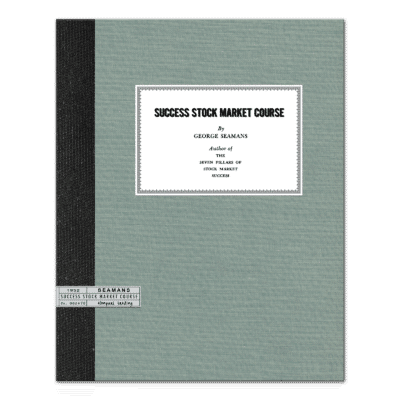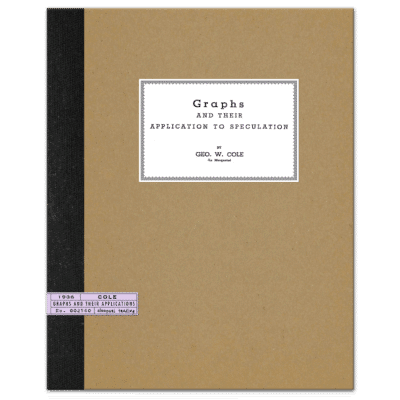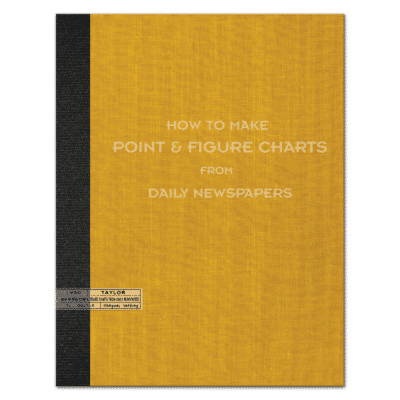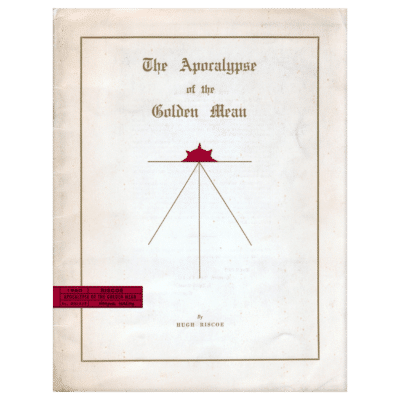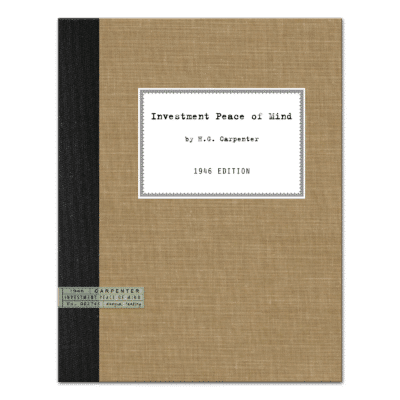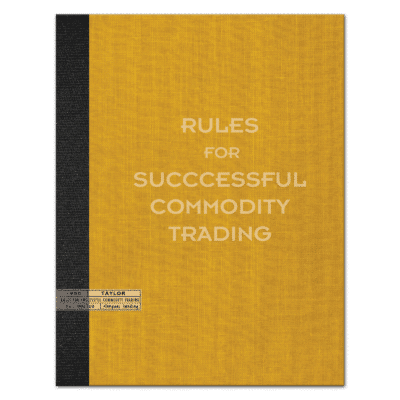Description
The Point & Figure Method of Anticipating Stock Price Movement (1934) by Victor de Villiers and Owen Taylor VOLUME 1
Alanpuri Trading, Los Angeles, 2022, Hardcover, Reprint, Illustrated with charts and diagrams, An exact facsimile of the 1934 revised version written by Victor de Villers and Owen Taylor. The title was originally released in 1933, this version is the revised 1934 edition. The title of this book is “The Point & Figure Method of Anticipating Stock Price Movement , BASIC PRINCIPLES, Book One.” This was the first book of what ended up to be a 3 Volume Series (as defined by Owen Taylor). Owen Taylor completed the series in 1939 without de Villiers when he released, “The Time Tested Technique of the Point and Figure Method.” Taylor augmented Vol. 3 in 1940 and 1941.
Summary: This title was originally released in 1933 by Victor de Villiers, THIS edition is an exact facsimile of the revised 1934 edition written by de Villiers AND Owen Taylor. There are many later versions of this title floating around, but this is the original 1934 typeset with the original charts. An excellent primer on Basic Point and Figure technique. (An Advanced Point and Figure book, Vol. 2, was also published by de Villiers and Taylor in 1934).
Contents: Authors Preface, Introduction, CHAPTER I. THE PRINCIPLES OF THE POINT AND FIGURE METHOD, Logic is the Basis of This Method, Irrelevant Fluctuations Eliminated, How the Method Got Its Name, Graphs are Logical and Scientific, Introductory Summary of Important Principles, Weeded Accessories are Few, Plotting the Stock Price Movement, One Point Charts the Basis of the Method, Accessories and Working Tools, CHAPTER II. THE WEIGHT OF AUTHORITY BEHIND THIS METHOD, Refined to Coordinate with Present Day Markets, Mystery and Complications Have Been Clarified, Expensive Financial and Economic Reports Unnecessary, Certain Factors Taken for Granted, Analytical Technic Easy to Master, Losses Limited While Profits Accrue, Method Weighs Forces of Buying and Selling, CHAPTER III. ADVANTAGES OF THIS METHOD OVER OTHERS, Speed and Ease of Recording Data, The Method Ignores Volume, Price Changes Versus Volume, Supply Versus Demand, Volume Easily Manipulated, Facility of this Method, The Utter Simplicity of the Records, Manipulation Readily Detected, Use All Full Figure Changes in Making Charts, Method is Superior to Inside Information, Isolation Develops Best Results, Our Charts Reveal Plans of the Majority, How the Move Begins, Stock Market Trading is a Business, Inside Information Unnecessary, One Point Charts Show All, CHAPTER IV. THE VITAL POINTS, Vital Point I – Recording Full Figure Changes, Vital Point II – Only Full Figure Changes, Vital Point III – Suitable Graphs Paper, Vital Point IV – Use of Horizontal and Vertical Columns, Vital V – Trend Reversals, Vital VI – Only One Symbol to a Square, Vital Point VII – Move Over Diagonally, Vital Point VIII – Skip No Squares, Vital Point IX – Formation of Congestion Area, Vital Point X – The Full Fulcrum, Vital Point XI – First Buying Point, Vital Point XII – The Catapult, Vital Point XIII – Secondary Buying Point, Vital Point XIV – The Semi Catapult, Vital Point XV – Third Buying Point, Vital Point XVI – Watch for Distribution, Vital Point XVII – Trends Lines, Vital Point XVIII – Forecasting the Extent of the Move, CHAPTER V. APPROVED METHOD OF ASSEMBLING AND MAINTAINING PROPER DATA, The Ticker Tape, Source of All Data, Daily Full Figure Fluctuations Available, Method Ideal for Those at Distance Points, Application of the Data, How to Prepare and Collate the Needed Data, Proper Graph Paper Helpful, Arrange Charts Orderly, How to Select the Issues to Record, Clarifying the Use of the Symbols, Moving to Next Vertical Column, Use of Symbol “0” (zero), One Cardinal Principle, Gaps are Not Recorded, How the Gap Occurs, The One Point Chart, The Three Point and Five Point Charts, Condensing the One Point Moves, Other Helpful Aids, The Method Substitutes for Taper Reading, Trend Outline and Geometrical Charts, The Proper Issues to Chart, Commodity Price Movements, CHAPTER VI. THE SCIENTIFIC FUNDAMENTALS, The Fulcrum, Leverage, Watch for the Fulcrum, The Idea Full Fulcrum, Down Trend a Prerequisite to Fulcrum Formation, Supply Equals Demand, Advantage of Figure Charts, The Buying Points, The Broad Fulcrum, The Recoil Fulcrum, The Catapult, The True Catapult, The False Catapult, The Semi-Catapult, Use Stops to Protect Position, CHAPTER VII. THE PRINCIPLES OF CHARTING, the One Point Chart, Move to Next Column, Signs of a Fulcrum, Technical Aids, The Three Point Chart, Determining Three Point Moves, The Use of Five Point Charts, CHAPTER VIII. ANALYZING TECHNICAL POSITION, The Price Path Characteristics, Patterns of the Leaders Duplicated in the Secondary Issues, Solid Formations Give Confidence, Watch for Changes in Activity, Strong and Weak Technical Position, Weak Technical Position, Gauging the Length and Culmination of the Moves, The Count, Coordinating Your Studies, CHAPTER IX. ANTICIPATING THE ACTION OF U.S. STEEL, The Full Ideal Fulcrum, The Catapult Position, The Semi-Catapult Position, Consolidating the Gains, The Final Mark Up, The End of the Move – A Reverse Fulcrum, The Short Positions, Geometrical Charts, The Trend Outline Charts, The Three Point Figure Charts, The Five Point Charts, Summary, CHAPTER X. ANALYZING A CAMPAIGN IN WESTERN UNION, Selecting the Fast Moving Issues, The Full Fulcrum Base, The Catapult, The Semi-Catapults, The Short Positions, Summary, CHAPTER XI. JUDGING THE MINOR SWINGS, The Half Hourly Index of the Dow Jones Industrials, The Half Point Half Hourly Log, Half Point Technic, Scientific Tape Reading, Analyzing the Half Point Chart, Ignore Rumors and Gossip, Summary, CHAPTER XII. HALF POINT TECHNIC IN ATLAS TACK, Historical Background, Analyzing the Campaign in Altas Tack, Important Signal During July Break, The First Caution Signal, Board Room Observations, The Shorts Begin to Cover, Point and Figure Analysis, CHAPTER XIII. THE MAIN TREND AND MAJOR CYCLE CULMINATIONS, Critical Culmination Points Easily Detected, The One Point Chart – The Basis for Analysis, Interpreting and Intricate Major Culmination, The First Temporary Top, Semi-Catapult Point – Unusually Bullish Pattern, Strength Carries Through Objective Level, The Change Over Technical Action, The Top of the Move Clearly Indicated, Indications of a Major Culmination, Bear Trend Technical Action, The Investor of Long Term Trader, CHAPTER XIV. TECHNICAL INDICATIONS AT A TURNING POINT, The Change to an Up Trend, The Change to a Down Trend, CONCLUSION. Charts: (Most are full page charts) Fig. 1, 2, 3A, 3B, 4, 5, 6, 7, 8, 9, 10, 11, 12, 13, 14, 15,16,17,18, 19, 20, 21, 22, 23, 24, 25, 26, 27, 28, 29, 30 — end. 93 pp.
ISBN-10: 1945574305
ISBN-13: 9781945574306
The Point & Figure Method of Anticipating Stock Price Movement (1934) by Victor de Villiers and Owen Taylor, VOLUME 1, 93 pp.
More Point and Figure Titles Available from Owen Taylor:
Vol 3: The Time Tested Technique of The Point and Figure Method (1941) by Owen Taylor









